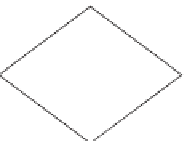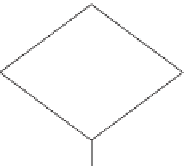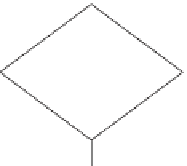Geoscience Reference
In-Depth Information
In contrast, the Dunham classifi cation scheme (Figure A6.12)
conveys information about the matrix or cement and the
texture of the rock. The grain type(s) can be indicated by
adding an adjective denoting the grain type (e.g. oolitic
grainstone). The observations necessary to decide on an
appropriate Dunham classifi cation are illustrated by the
fl owchart below:
6
mudstone *
Yes
Are
there less
than 10%
grains?
No
wackestone *
Yes
Are
less than
10% of the grains
>2 mm?
No
floatstone *
*
In addition a prefix can be added
denoting the most abundant grains
or organic components (e.g. oolitic
grainstone, bryozoan bafflestone)
Yes
Is it
mud (matrix)
supported?
No
packstone *
Yes
Does it
contain
lime mud
(micrite)?
Are less
than 10% of
the grains
>2 mm?
Is it
organically
bound?
No
No
No
Use Dunham
classification
rudstone *
Yes
Yes
boundstone
grainstone *
more specifically
Are the
organisms
binding the
sediment?
Are the
organisms
acting as a 3D
framework?
Are the
organisms acting
as baffles?
No
No
Y
Y
Yes
bafflestone *
bindstone *
framestone *





















































